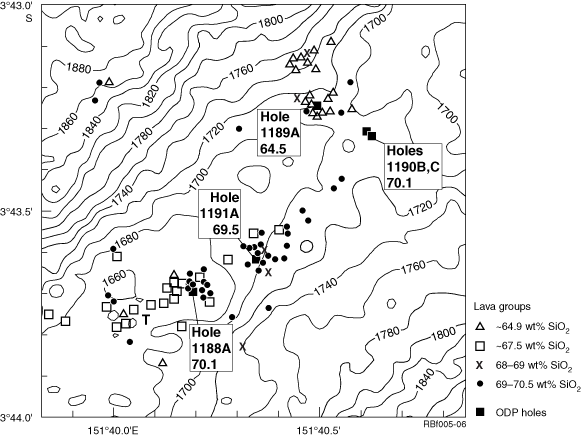
Figure F3. Distribution of lava groups sampled by dredge, grab, and submersible in the PACMANUS vicinity (unpublished CSIRO data). Relatively few exposures do not fall into one of three comparatively invariant compositional groups. Typically lobate exposures of a glassy dacite averaging 67.5 wt% SiO2 extend from southwest of the Tsukushi hydrothermal site (T) to Snowcap (Site 1188), where bottom-tow photographs and submersible observations show lava fronts extruded over altered rock outcrops. Block lavas with compositions spanning the dacite/rhyodacite border (SiO2 = 69.0–70.5 wt%) dominate at Snowcap and Satanic Mills (Site 1191) and continue to the northeast of the latter toward Site 1190. Low-silica lavas (average SiO2 = 64.9 wt%) typify the Roman Ruins (Site 1189) and Rogers Ruins (200 m north of Site 1189) hydrothermal sites. Boxes indicate wt% SiO2 of lavas cored in the uppermost intervals of Holes 1188A, 1189A, and 1191A; their compositions conform to the dominant outcrops at those sites. The younger ~67.5 wt% SiO2 lava sequence extending from Tsukushi to Snowcap was not drilled. Penetrations at the reference Site 1190 may belong to the same high-silica lava group exposed at Snowcap and Satanic Mills. All SiO2 values cited refer to anhydrous compositions. Most sampling operations used in this diagram were deployed or navigated with high precision and hauled only short distances, but uncertainties in positioning of samples (~50 m) may be responsible for some of the scattered anomalies. Isobaths are in meters below sea level.


![]()